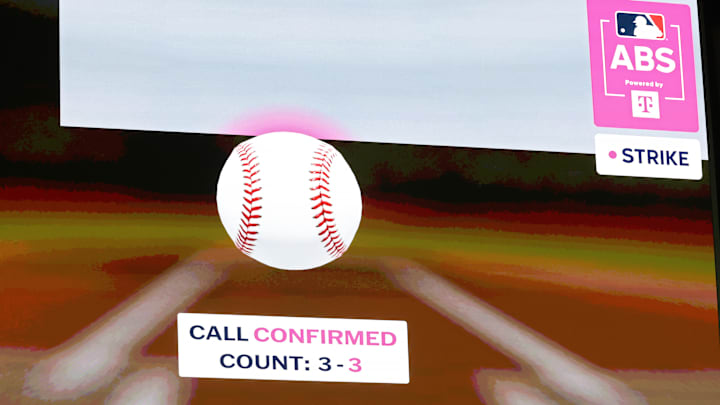In the wake of Tuesday night's MLB All-Star Game, all anyone wants to talk about is the ups and downs of the swing-off system the league devised to break a tie after nine innings. And no one is happier than big-league umpires, because if it weren't for that ending, it's likely that we'd all be talking about how developments in automation are coming for their jobs.
Much like it did in spring training, baseball gave its ABS (automated ball-strike) challenge system another test run at the Midsummer Classic. And it took less than an inning to make clear just how much its implementation could improve the games that actually count. With one out in the bottom of the first, Detroit Tigers ace Tarik Skubal threw a changeup to Manny Machado that sure seemed to look like strike three. Home-plate umpire Dan Iassogna called it low, but Skubal immediately challenged; just seconds later, the call was corrected and Machado was heading back to the dugout.
Take that, rewind it back 🎶
— MLB (@MLB) July 16, 2025
Tarik Skubal successfully challenges for a strikeout! #AllStarGame pic.twitter.com/X1cMuIMtT4
And that was just the beginning of several easy, painless challenges that reversed incorrect calls without disrupting the flow of the game. It happened to A's shortstop Jacob Wilson in the fifth:
Another ABS Challenge success. #MLB #AllStarGame ⚾️🤖pic.twitter.com/07ru5gD9Po https://t.co/ZHXcqSbouV
— Awful Announcing (@awfulannouncing) July 16, 2025
And then again to Seattle Mariners outfielder Randy Arozarena in the top of the ninth, turning what could have been a crucial miss — which would have given Arozarena another chance to hit with the go-ahead run in scoring position — into an inning-ending strikeout.
Edwin Diaz gets the strikeout after successfully using an ABS challenge 😮💨 pic.twitter.com/EZlALxvgqH
— SleeperMets (@SleeperMets) July 16, 2025
The takeaway was clear: Umpires, for as good as they are, still miss a whole lot, and we have the means to help remedy that fact in a way that doesn't seem to present much of any downside.
For more news and rumors, check out MLB Insider Robert Murray’s work on The Baseball Insiders podcast, subscribe to The Moonshot, our weekly MLB newsletter, and join the discord to get the inside scoop during the MLB season.
All-Star Game test run put to rest any arguments against ABS challenge system
When the ABS challenge system was first introduced into independent ball and then the Minor Leagues, the biggest concerns would be how the technology would function and the extent to which it might interfere with the flow of a game (especially in big moments). But it consistently and correctly managed the strike zone on Tuesday night, and there wasn't a single challenge that took more than 30 seconds or so to resolve.
In short, it worked exactly as the league had hoped, and overall it's hard to argue that the game wasn't better for it. Full robo-umps are still probably a little way's away — the tech just isn't quite reliable enough yet, and that's a much bigger fish to fry for the umpire's union — but there's no reason why we can't get the ball rolling on challenges in meaningful games as soon as possible.
And from there, it'll be hard to put the toothpaste back into the tube. A successfully implemented challenge system will highlight key missed calls on a daily basis, and do even more damage to umpires' PR in the process. Umpiring, especially behind the plate, has gotten substantially better in recent years, and again it's a bit more difficult to imagine a time in which there's no human element to the strike zone whatsoever. But we got a glimpse into the future on Tuesday night, and it's one in which umps don't wield quite so much power as they're used to.
